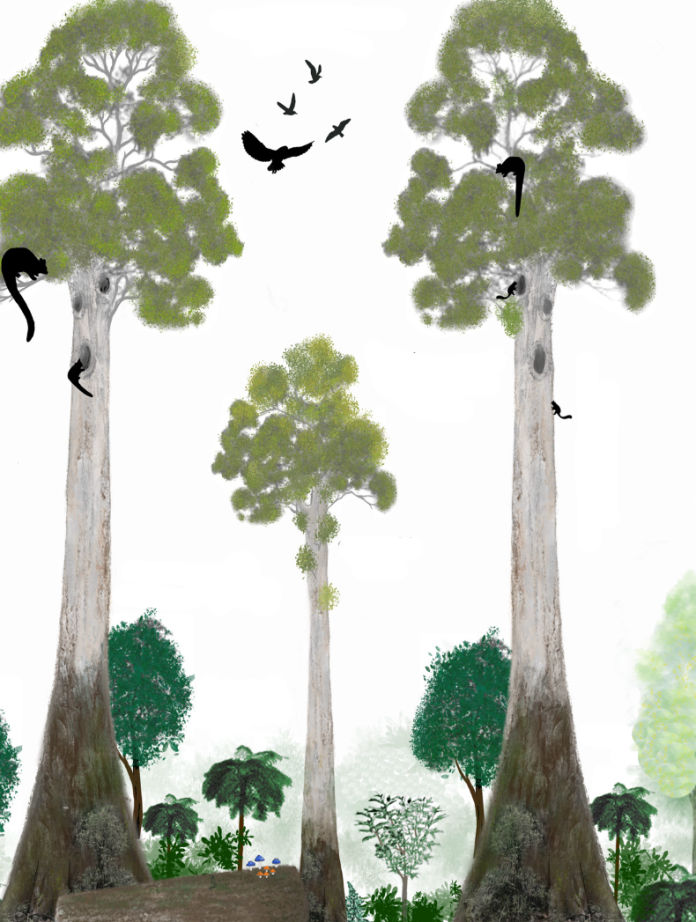Climate mitigation
Protecting the Rainforest Refuge will help safely store more carbon than a pine plantation, helping to mitigate the effects of climate change.

Old Growth Mountain Ash
1800+ Tonnes CO2 /ha
Native forests are the best forests to store and sequester carbon.
Native forests are superior to plantations as they are:
*more resilient to climate change
*more secure from biological attacks from pest species
*more fire resistant
*maintain biodiversity
*store much more carbon than plantations
*scientists have also found that native forests continue to store carbon as mature forests, debunking the myth that old-growth forests are carbon neutral.

100 Year Mountain Ash
1000 tonnes C02 p/ha
Comparing high rates of sequestration in young forests (such as plantation and revegetation) with slower rates in older forests obscures the primary climate value of a forest, that is the stability and size of the forest carbon stock. Protecting the carbon stocks in existing (and especially older) forests is more important from a climate perspective than planting new forests or trees because the older the forest the more carbon is safely stored.

Pine Plantation
290-500 tonnes CO2 p/ha
Pine plantations store more carbon than cleared agricultural land but are the least best option for high conservation value areas.
It would take 50 to 100 years for plantations to capture the same amount of carbon as a natural forest. And since most plantation forests are harvested at 25 year intervals, they will never make it to the carbon-neutral point.
Biodiverse natural forests are the most secure carbon bank and are the best protectors of this stored carbon.